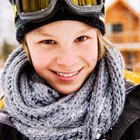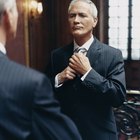
Camouflage is a type of clothing characterized by a randomized pattern of grays, greens and browns commonly found in nature, designed to hide the wearer in a natural setting. Camouflage clothing was originally developed for use by the military, but it is also a common sight on outdoor sports enthusiasts, such as hunters, fishers and paintball players. Night camouflage uses the same randomized pattern of natural colors, in darker shades, to disguise the wearer in a dim environment.
Typical Night Camouflage Colors
In general, night camouflage uses similar colors to regular camouflage, with respect to the presumed nighttime environment of the wearer. Brown yellow khaki, green brown, olive drab, neutral gray, beige, red brown, dark chestnut, charcoal, dark slate gray and fern green are all common camouflage colors that are found on night camouflage in darker shades. The military also developed desert night time camouflage, which features a grid pattern of khaki and beige and was designed to hide the wearer from enemy night vision devices. This design and color pattern has since been designated obsolete because of the advances in night vision technology and poor field testing.
Environmental Considerations
The environment where you intend to wear your night camouflage is another factor determining what colors of night camouflage you should look for. The majority of camouflage is designed for a forest environment, which comes in handy for hunters or paintball enthusiasts who generally find themselves in such a location. The colors typically used in "Green Temperate" camouflage are green, beige, brown and dark gray. There is also winter camouflage, which incorporates white and gray into the design, and desert camouflage which is more beige and khaki based. Urban camouflage is a slightly more complex area of coloration, and is relatively new to the camouflage world. It generally utilizes a gray palette, which would be made darker for a nighttime environment.
Why Not Solid Black?
Wearing a solid color at night actually makes you more visible, as it defines your silhouette against a non-solid color background. The average nighttime environment isn't actually solid black, but rather a combination of various dark shades. Another aspect to take into consideration is how solid black shows up in a near infrared camera, which is often used at night in military operations, as well as by hunters and at paintball games. Solid black appears as bright white in a near infrared camera, making the wearer stick out more than if they were wearing duller shades.
Related Articles

Shawl Collar Vs. Lapel Tuxedo

What Color Clothes Makes Brown Eyes ...

What Color of Blouse to Wear With a ...

How to Apply Eyeshadow for Women Over 50

What Compliments a Navy Blue Dress?

What Is the Meaning of Colored Bandanas?

How Do Yellow Lenses in Ski Goggles ...

What Color Heels Will Go With a Dark ...

Dance Party Theme Ideas

What Shirts Go Best With a Tan Suit?

How to Match a Tie With a Black Dress

What Do Gray Shoes Go With?

How Does Ultraviolet Light Affect ...

What Do Brazilian People Wear?

What Color Slacks Would Go With a Light ...

What Would Go with a Black & Blue Skirt?

The Difference Between Houndstooth & ...

What Do People Wear to the Metropolitan ...

Levels of Polarized Sunglasses

How to Design a Military Uniform
References
Writer Bio
Marysia Walcerz has been writing since 2008. She has been published in several compilations of artistic and philosophical work, including "Gender: Theory in Practice" and "Retold Comics." Walcerz has a Bachelor of Arts in fine arts and philosophy from The Evergreen State College.
Photo Credits
camouflage image by KALISTE A from Fotolia.com